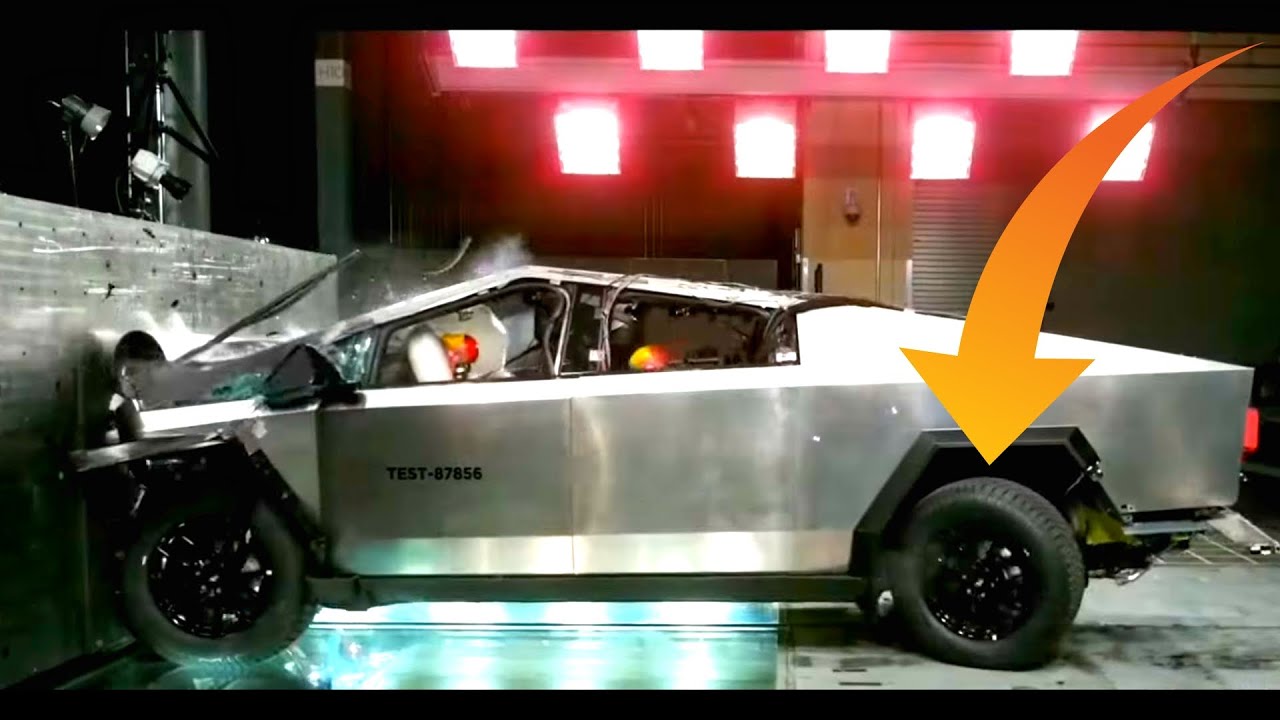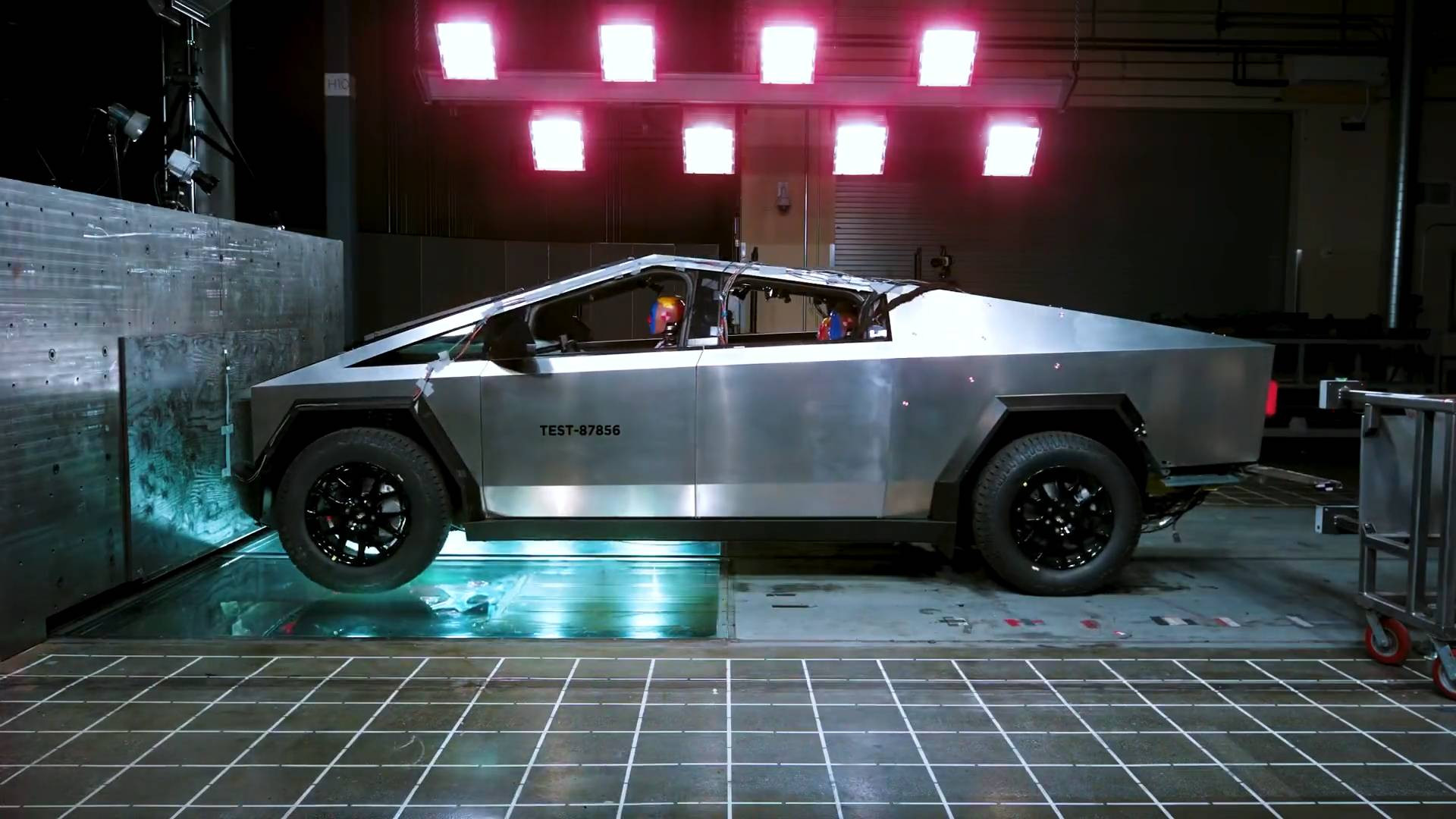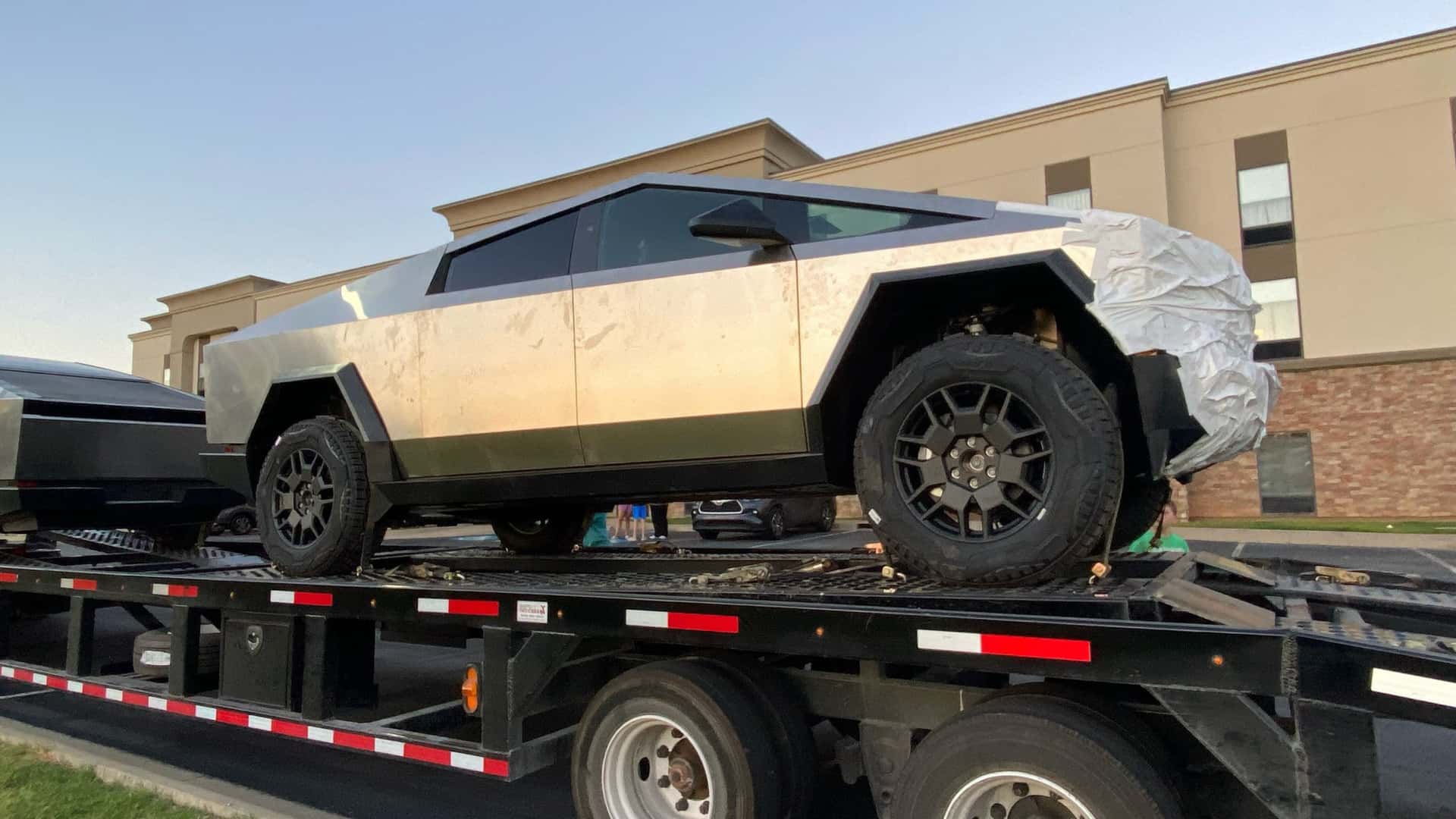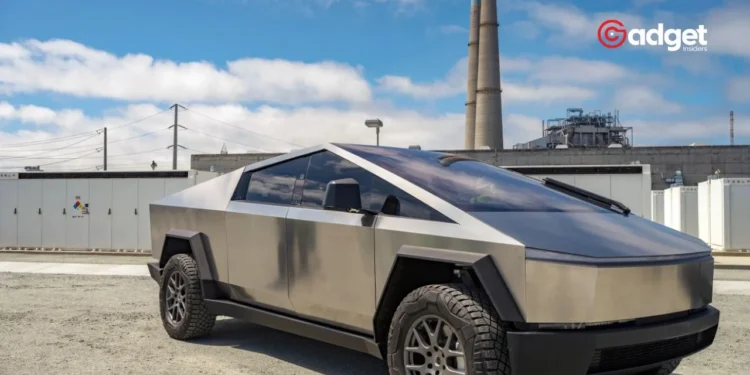In the ever-evolving world of electric vehicles, Tesla continues to push the boundaries of innovation, this time with the latest safety update to the Cybertruck’s frunk. The recent development was aimed at making the frunk safer by enhancing its ability to detect obstructions before closing completely. However, the real-world application of this update, as tested by popular YouTuber Jeremy Judkins, led to a mix of results—and a painful lesson.

The Test Begins: Vegetables First
The Cybertruck’s frunk, designed to provide secure storage at the front of the vehicle, underwent a significant safety overhaul following a slew of videos showcasing the frunk’s ruthless efficiency in slicing through vegetables. This led Tesla to release a software update intended to refine the frunk’s sensors and prevent such incidents.
Judkins embarked on his experiment by placing various produce items—carrots, cucumbers, and bananas—into the frunk both before and after the update. Initially, the frunk acted like a guillotine, mercilessly chopping through the vegetables. “It is destroying everything,” Judkins noted, highlighting the aggressive nature of the pre-update frunk.
I’m excited to see the Cybertruck in a crash safety test. It’s gonna force NHTSA to add a 6th star to their safety ratings. #Tesla.. now the safest car AND truck on earth. pic.twitter.com/sFgCuCuZYR
— Ryan G (@RyanG1919) January 14, 2023
Post-update, the results seemed promising. “With just a software update, the Tesla Cybertruck frunk is way safer,” Judkins observed, relieved to see the vegetables emerge unscathed after their encounter with the improved frunk.
Escalating the Test: From Produce to Finger
Confident with the initial results, Judkins decided to escalate the test. He began with less risky experiments, placing the thin tip of a carrot and then parts of his arm and hand under the frunk’s lid. While the carrot tip did break, the pressure on his arm and hand was minimal, only leaving a temporary line on the skin.

The real shock came when Judkins courageously placed his finger directly in the frunk’s path. The lid closed, and the result was immediate—a shaking hand, a visible dent, and a minor cut or skin tear. “It kind of locked down on it and I was a little freaked out because I didn’t know how to open it up. I was kind of trapped,” he explained. Fortunately, the frunk detected the resistance and eventually opened, but not before causing significant discomfort and fear.
A Technical Misunderstanding?
The painful experiment led to an intriguing revelation from a Tesla lead Cybertruck engineer, who noted that Judkins might have misunderstood the frunk’s operating mechanism. According to the engineer, the frunk adapts and increases pressure with each obstruction it encounters, assuming the obstruction might be something non-critical like a bag. “Using this information, that means it closed on my finger harder than my hand and way harder than my arm,” Judkins deduced from his conversation.

This adaptive pressure mechanism, while designed to ensure the frunk closes securely despite minor obstructions, poses a significant risk if it misinterprets human body parts as inconsequential obstructions. The experiment underscored a critical need for Tesla to refine its algorithms to prioritize human safety over closing efficiency.
Tesla’s Frunk Safety Test: Balancing Technology and Human Safety
Jeremy Judkins’ daring test with the Tesla Cybertruck’s frunk brings to light the challenges and complexities of integrating advanced technology into everyday vehicle functions. While the update significantly enhances safety for everyday objects like groceries, the technology still struggles to differentiate between these and more critical obstructions like human limbs.
Tesla’s journey towards perfecting vehicle safety continues, with valuable lessons learned from real-world testing by engaged and bold community members like Judkins. His experience serves as a crucial reminder of the balance between technological advancement and the paramount importance of human safety. As Tesla goes back to the drawing board, users might find solace in safer bananas, but they will think twice before testing the frunk with their fingers.










